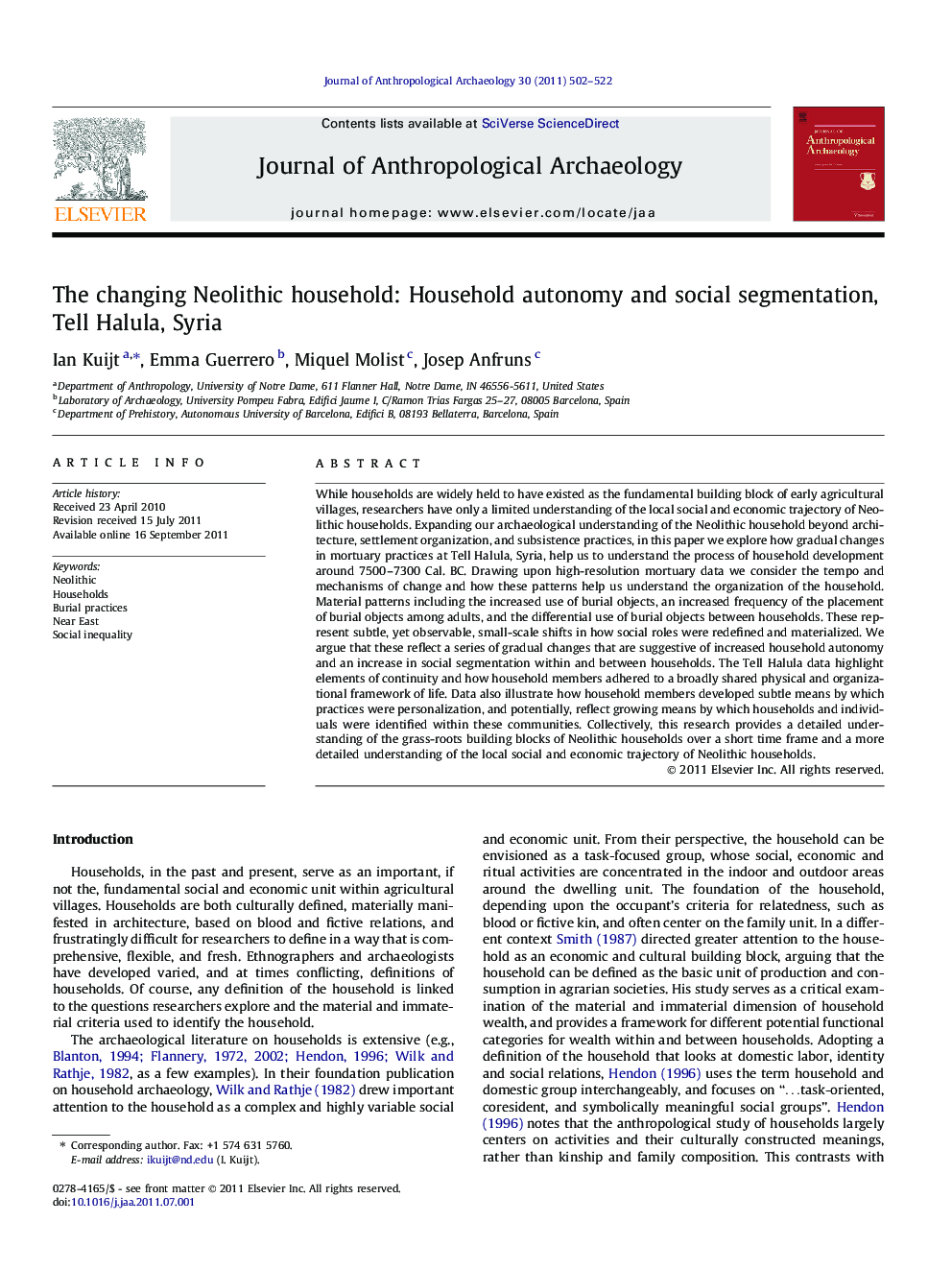| Article ID | Journal | Published Year | Pages | File Type |
|---|---|---|---|---|
| 1035002 | Journal of Anthropological Archaeology | 2011 | 21 Pages |
While households are widely held to have existed as the fundamental building block of early agricultural villages, researchers have only a limited understanding of the local social and economic trajectory of Neolithic households. Expanding our archaeological understanding of the Neolithic household beyond architecture, settlement organization, and subsistence practices, in this paper we explore how gradual changes in mortuary practices at Tell Halula, Syria, help us to understand the process of household development around 7500–7300 Cal. BC. Drawing upon high-resolution mortuary data we consider the tempo and mechanisms of change and how these patterns help us understand the organization of the household. Material patterns including the increased use of burial objects, an increased frequency of the placement of burial objects among adults, and the differential use of burial objects between households. These represent subtle, yet observable, small-scale shifts in how social roles were redefined and materialized. We argue that these reflect a series of gradual changes that are suggestive of increased household autonomy and an increase in social segmentation within and between households. The Tell Halula data highlight elements of continuity and how household members adhered to a broadly shared physical and organizational framework of life. Data also illustrate how household members developed subtle means by which practices were personalization, and potentially, reflect growing means by which households and individuals were identified within these communities. Collectively, this research provides a detailed understanding of the grass-roots building blocks of Neolithic households over a short time frame and a more detailed understanding of the local social and economic trajectory of Neolithic households.
► We examine Neolithic mortuary practices from Tell Halula, Syria. ► Placement of burials and mortuary goods change at 7500 to 7300 Cal. BC. ► Changes in burial practices reflect increased household autonomy. ► Increased social inequality is seen in early agricultural village mortuary practices.
